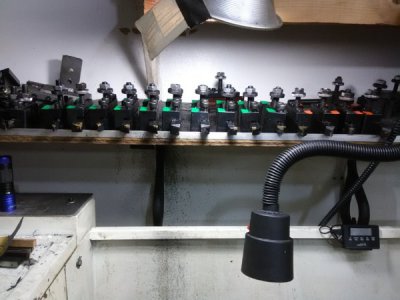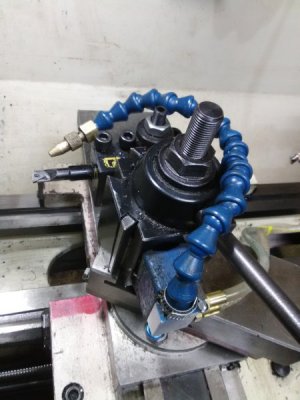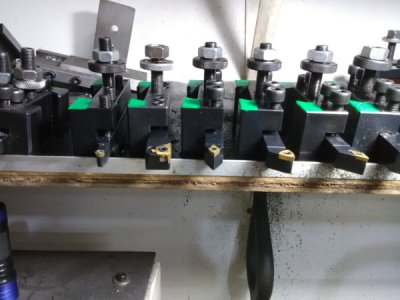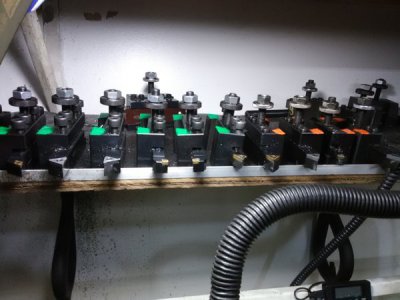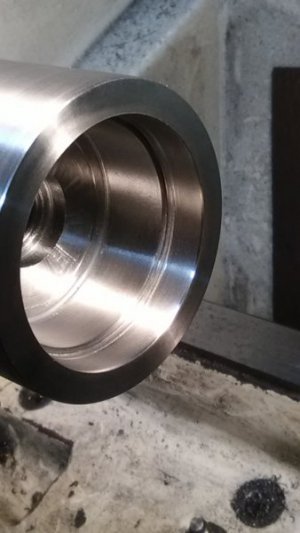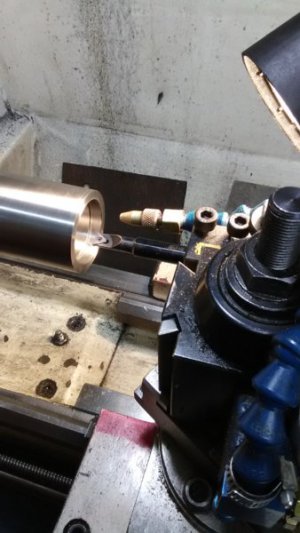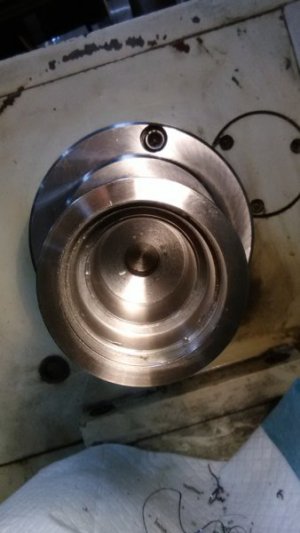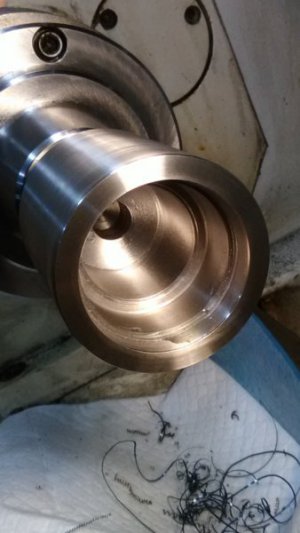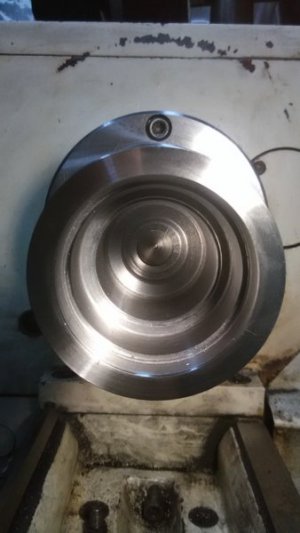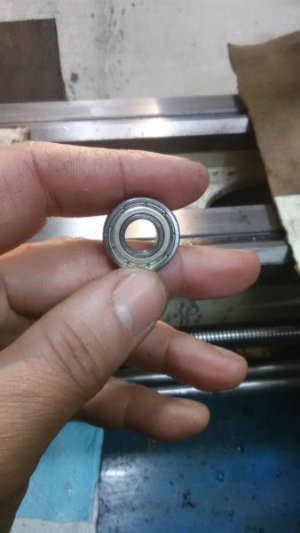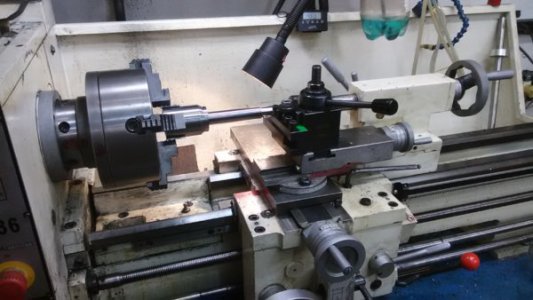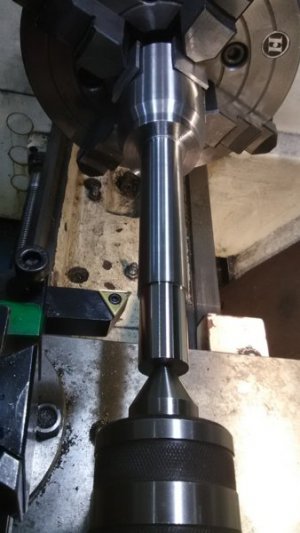I'd like to know Ray. I'm sure others would too.
First things first, lets talk about turning a shaft. Boring a hole is pretty much the same thing (but in reverse).
Metals: With carbon steels (including/especially stainless steel), you need to know it's condition: Is it hot or cold rolled, hardened, normalized, annealed... etc. If it's unknown or known to be either hot or cold rolled, the outer portion to about 1/8" deep from the surface, is unpredictable and will not behave "linearly". It may have hard spots in unpredictable places. You need to chew-off that outer layer for this technique to yield results. Normalized, fully annealed and known hardness metals are OK. The exception being really hard metal near the RC 50 or above range.
Having said the above, you probably know why I like working on conditioned metals.
BTW: Brass, bronze, aluminum etc don't have these problems and are pretty homogeneous so, the technique should work.
Tooling: I use this technique with carbide only but I see no reason why it won’t work with HSS. Often times, older (aka, slightly dull or chipped) inserts are used for hogging-off scale and to reach the final diameter. When making final passes, it’s best to use fairly fresh or new inserts for this to work properly.
Cutting angle: Every insert style has a preferred “angle of attack” to work properly. For now, it’s assumed the tool is positioned appropriately for the insert and is setup for finish passes. (BTW: This is a whole different topic).
So…. Let's say you have a known clean shaft that's 1.310" dia and it needs to be 1.1250" -0, +0.0010.
You need to know your machine, your tooling and what DoCs you can take with confidence. In the case of my PM 1236, when I'm approaching the final passes, I aim to dial-in 0.030".
1.310 - 1.1250 = 0.1850 (EDIT: I had a typo here and changed 1.1255 to 1.1250).
On my machine, when I dial-in 30 thou, it reduces the diameter by 60 thou (some lathes are calibrated for diameter reduction and not tool position). Since .1850 / 0.60 is 3.0833 we know I must take 3 passes at 30 thou and an oddball pass at 2.5 thou (.0833 x .06 / 2 is 0.0025).
Here’s the rub… What you dial in and how much comes off are two different things most of the time. Unless there is a gross F&S error or tool alignment issue, it will almost always take off less than what you desire. First, just go ahead, dial in the 2.5 and remove it. An amount that small should come off with no problem.
So, take the first cut at 30 thou then measure your diameter. Lets say the diameter was reduced by 56 thou instead of the desired 60 thou. This means you are getting 56/60 of what you ask for. Take the next cut at 30 thou. This time, lets say you get 57 thou reduction. Now, your part needs the remaining 30 thou cut plus one at 1.5 and another at 2 thou (to account for shortage of the other two passes).
You now aspire to have an effective dial in of 33.5 but you know that if you dial that amount in, you will come up short and be left with a skim pass that will ruin the finish. What to do: Linear projection:
In the first two cuts, you got on average 56.5 out of 60 which is 0.9417. Take 33.5 and divide by .9417 and get 35.58 which we’ll round to 35.6. So, if the past history predicts the future, dialing in 35.6 thou should get you the 33.5 you hope for. If you’re afraid of blowing the mark, pull your dial in by about a quarter thou. I do all this with dials (not DRO) and it gives me very successful results.
When doing this, you want to remove stock until you get within 2 or 3 passes of your final size at your desired DoC. 4 final passes is too many. If use too many averaged results, things become non-linear as removal rates are influenced by part diameter.
The remaining questions are how you ready the tool for the cut. Do you scratch-off and reset or, do you keep track of where your last cut and increase your numbers from there… That’s up to you and your particular style. Whatever you use, be consistent the entire time.
Give it a whirl…
If this works for you, I'd suggest creating a spreadsheet that automatically does the calculations. I've created this and other spreadsheets that work in-conjunction with each other. It tells me ongoing effective dialed-in amounts and determines the final dial-in amount for a finish pass within a range of acceptable DoCs. Also, they tell me if I should take those odd-ball passes right up-front or, if they should be averaged in with the final passes etc... That's the magic that works for me and my lathe -and probably won't work well for someone else and their equipment...
Ray C.

